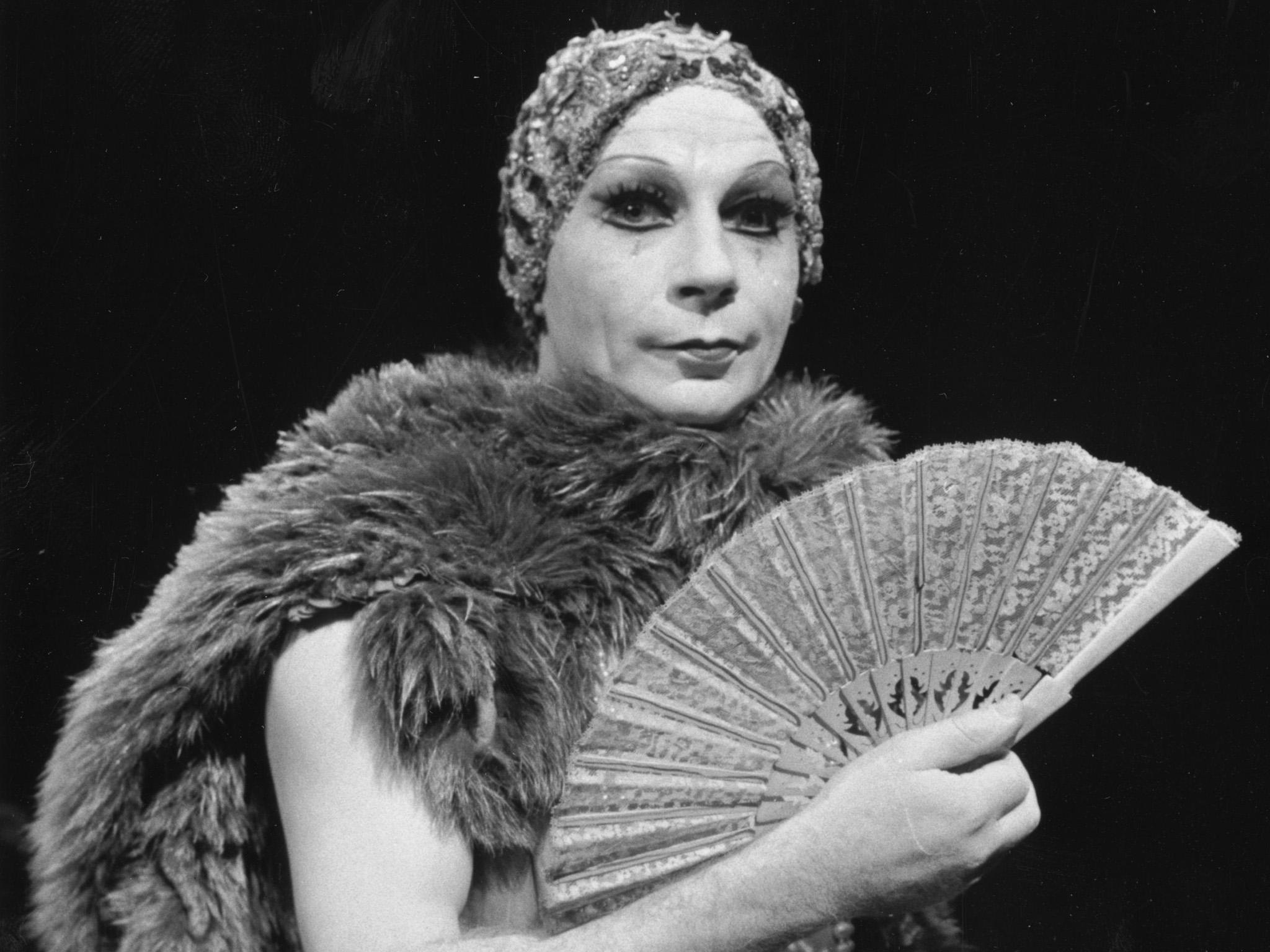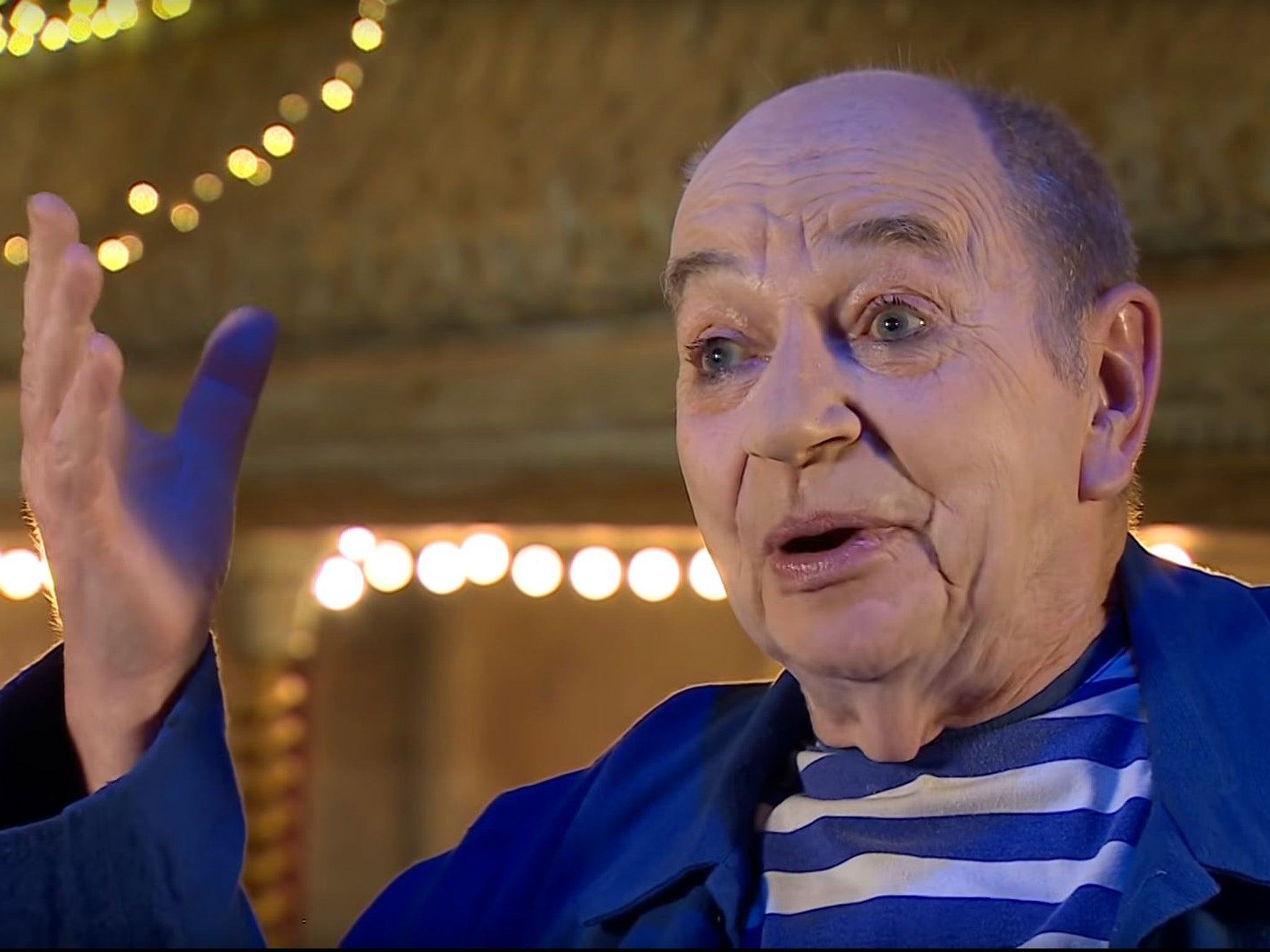Lindsay Kemp: Iconoclast whose dance and choreography inspired David Bowie and Kate Bush
Performance artist kicked out of the air force for wearing kohl on parade worked with some of the biggest names in showbusiness

Your support helps us to tell the story
From reproductive rights to climate change to Big Tech, The Independent is on the ground when the story is developing. Whether it's investigating the financials of Elon Musk's pro-Trump PAC or producing our latest documentary, 'The A Word', which shines a light on the American women fighting for reproductive rights, we know how important it is to parse out the facts from the messaging.
At such a critical moment in US history, we need reporters on the ground. Your donation allows us to keep sending journalists to speak to both sides of the story.
The Independent is trusted by Americans across the entire political spectrum. And unlike many other quality news outlets, we choose not to lock Americans out of our reporting and analysis with paywalls. We believe quality journalism should be available to everyone, paid for by those who can afford it.
Your support makes all the difference.Lindsay Kemp was born in Liverpool in the late 1930s, to parents who had just lost their five year old daughter Norma, to meningitis – they had hoped for another daughter. But they got a boy. It was a fact that, it is fair to say, informed his dazzling personality to no small degree.
“I inherited my sister’s kimonos and fans, which became my favourite clothes,” the dancer and choreographer told The Independent in 1996. “And though I had never known her, I inherited her gestures as well.”
He used dance as a way to navigate a difficult childhood.
When he was two years old, a ship carrying his father, a merchant navy sailor, was torpedoed. His widowed mother moved with her son to South Shields.
Kemp became hooked on performance after seeing his first panto at the Sunderland Empire, aged four. His mother enrolled him in ballet lessons and he put on shows for other local children.
When he was eight, finding his antics – such as dressing up in full makeup and dancing on the kitchen table to the delight of neighbours – challenging, his mother packed him off to boarding school, “hoping it would knock some sense into me,” he said.
Kemp said: “I was so different from everyone else, I had to enchant to save my skin. It was there that I learnt the art of hypnosis, which is an essential part of the artist’s technique.”

The boarding school in question was Bearwood College, founded by the Merchant Seaman’s Orphanage. Though the atmosphere was stern and masculine, Kemp continued to entertain.
In his last year at Bearwood, Kemp applied to Sadler’s Wells but was told he was “temperamentally and physically unsuited to a career as a dancer”. Instead he spent a year at Bradford Art College, where he became friends with David Hockney. He then applied to the Ballet Rambert, and won a place, but first had to complete a year’s national service. He joined the RAF but was dismissed after turning up to the parade ground wearing kohl.
In London, Kemp studied with exiled Austrian dancer Hilde Holger, and none other than Marcel Marceau taught him the art of mime. In turn, he gave classes at the Dance Centre in Covent Garden and in 1963, he played the Player Queen in the BBC’s production of Hamlet at Elsinore. Not long afterwards, he put together his own dance company.
In 1968 a creative breakthrough arrived. Captivated by Jean Genet’s novel of the Parisian underworld, Our Lady of the Flowers, Kemp created an homage. His flamboyant, erotic and defiantly homosexual show, The Flowers, debuted at the Edinburgh Festival, with young men he’d met in the park in the chorus. The show was frequently raided by the police, which only added to its mystique. Kemp took Flowers to London, the US and Australia before returning to London, where it played with his new work, Salome, in the Roundhouse for six months.
In the course of his career, Kemp worked with some of the biggest names in film, including Ken Russell and Derek Jarman.
As a dance teacher, Kemp taught Peter Gabriel, Mia Farrow and Kate Bush, with the latter’s 1978 song “Moving” inspired by him. Much later, in 1994, he worked with her on her short film The Line, The Cross and The Curve.
Kemp’s most famous collaboration though, was with David Bowie. The two men first met in 1967, through shared agent Brian Epstein. At the time Kemp was sharing a flat with Steven Berkoff and performing a work called Clowns. Bowie, aged 19, was thinking about giving up music and becoming a Buddhist monk but Kemp said he saved the rock star from that fate, demonstrating how he might live as a performance artist instead. The two became lovers and collaborated on a touring show, Pierrot in Turquoise.
In a 1974 interview, Kemp said: “Even before meeting, David and I had felt the need to work together. I’d identified myself with his songs, and he’d seen my performances and identified himself with my songs. I was singing the songs of my life with my body; he was singing the songs of his life – very fabulously – with his voice, and we reckoned that by putting the two together the audience couldn’t help but be enthralled.”
Kemp and Bowie’s relationship as lovers didn’t last – Kemp attempted suicide when he discovered Bowie was also sleeping with a woman – but after a period of estrangement they came back together for work. Kemp staged and performed in Bowie’s 1972 Ziggy Stardust concerts at the Rainbow Theatre in London. He also appeared in the video for Bowie’s single “John, I’m Only Dancing”.
Though growing in popularity with every new show, Kemp’s style didn’t suit everyone. In 1977, he created Cruel Garden for Ballet Rambert, in collaboration with choreographer Christopher Bruce and composer Carlos Miranda. When Kemp’s former teacher and mentor Marie Rambert saw the work, she hit him with her stick and told him he should go back north. Cruel Garden subsequently became a much loved part of Ballet Rambert’s repertoire.
Kemp didn’t go back north as Madame Rambert suggested, instead moving to Spain, and later Italy, where he installed his company in an abandoned hilltop monastery in Umbria. While in Italy, Kemp turned his attention to opera. He also created and performed in Cinderella – a Gothic Operetta at Sadler’s Wells.
He never stopped working. In 2016, he brought a new production of Die Zauberflöte to Livorno, co-designing the lighting as well as the show’s costumes and sets. The same year, he returned to South Shields where he taught a series of dance masterclasses for locals and was presented with an Honorary Fellowship Award for exceptional individuals in arts and entertainment.
Just a month after his 80th birthday Kemp gave his last UK performance, at Manchester’s Bridgewater Hall. It was a multimedia live arts installation with singer songwriter Tim Arnold, in which Kemp danced to Arnold’s song “What Love Would Want”, backed by the Manchester Lesbian and Gay Chorus.
Speaking to Newsnight’s Stephen Smith in 2016, he neatly summed up the early days that informed his career: “I never walked, I always danced. I found dancing much more pleasurable than walking. I had a fairly tough time in the air force because I didn’t march, I danced.”
Lindsay Kemp, dancer, born 3 May 1938, died 25 August 2018
Join our commenting forum
Join thought-provoking conversations, follow other Independent readers and see their replies
Comments